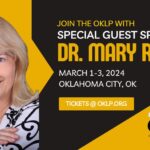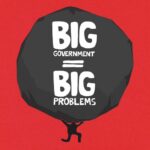Most people think that government protects the environment, but it actually does just the opposite. For example, Yellowstone Park, the jewel of the US national park system, has been incredibly mismanaged. In 1915, the Park service decided to eradicate the Yellowstone wolves which were deemed to be a menace to the elk, deer, antelope, and mountain sheep that visitors like to see. Eventually the Park subsidized the killing of fox, lynx, martin and fisher too.
Without predators, the hoofed mammals flourished and begin to compete with each other for food. The larger elk eventually drove out the white tailed deer, the mule deer, the bighorn sheep, and the pronghorn. The elk ate the willow and aspen around the river banks, trampling the area so that seedlings could not regenerate.
Without the willow and aspen, the beaver population dwindled. Without the beavers and the ponds they created, waterfowl, mink, and otter were threatened. The clear water needed by the trout disappeared, as did the shrubs and berries that fed the bear population. When the garbage dumps were closed in the 1960s to encourage the bears feed naturally, little trout, shrubs, or berries remained. Bears began seeking out park visitors who brought food with them. Yellowstone management began a program to remove the problem bears as well. In the early 1970s more than 100 bears were removed. Almost twice as many grizzlies were killed.
By 1987, environmentalists encouraged the reintroduction of wolves, in an attempt to undo the environmental destruction caused by the government Park service. Only when a private group, the Defenders of Wildlife, agreed to compensate ranchers when wolf predation brought one of their animals down, was the Park able to reintroduce the wolves without creating a range war. By 2009, the wolf population had rebounded to more than 1600 individuals.
No matter how well-intentioned, the Park service cannot accommodate everyone’s wishes. Hikers, for example, want hiking trails built in the national forests. Logging companies want to harvest the national forests and want logging roads built. Commercial interests will always win out in such battles, because the profit to be made can be converted into campaign donations to reward politicians who make access possible. Consequently, the Forest Service typically receives 20 cents for every dollar spent on roads, logging, and timber management. Meanwhile, the number of hiking trails has diminished.
While government depletes our national forests, the largest private US landowner, International Paper, carefully balances public recreation with logging. In the southeast, 25% of its profit is from recreation. Industry grows 13% more timber than it cuts in order to prepare for future needs.
Generally speaking private owners take much better care of the land than bureaucratic government does. Private owners are rewarded with profit when they improve the value of the land. Bureaucrats, however, can only personally profit by selling out to special interests. Even when politicians attempt to act with integrity, the special interests will subsidize the campaigns of those who see things their way. Almost always, the special interests will win. The only way to protect the environment is to require special interests to own the property they wish to exploit. Their own selfishness will prevent them from destroying assets that they hope to profit from.
For example, some ranchers in the western United States graze cattle both on their own land and that controlled by the Bureau of Land Management (BLM). On private lands, they limit the number of cattle, so that the land will stay productive; on BLM’s land, they overgraze. Improving the property doesn’t make sense, since they can’t be sure they will be allowed to rent the same pasture in the following year. Consequently, cattle are twice as likely to die and have half as many calves on BLM land.
When ranchers are offered 10 year leases on public grazing land, they take much better care of it, as they know they will be using it in the following years. In essence, the lease gives them partial ownership. As a result, when this program was put in place in 1934, almost half of the rangeland that had been classified as poor was upgraded by the ranchers at their own expense.
However in 1966, leases were reduced to only one year once again. As a result, private investment in wells and fences in the early 70s dropped to less than a third of their 1960s level.
Most people think that government prevents the extinction of wildlife. They are unaware that state governments once paid hunters tax-subsidized bounties to kill hawks and sea lions, for example. Private individuals bought the breeding grounds frequented by these majestic animals and protected them from the bounty hunters. Hawk Mountain, in the Pennsylvania Appalachians, has been protecting hawks since 1934. The owners of Sea Lion Caves have been protecting the only known mainland breeding and wintering area of the Steller sea lion since 1927.
We are more likely to protect the environment when we own a piece of it and profit by nurturing it. Instead of hoping that someday government might not be susceptible to special interests manipulation, we can protect the environment now by privatizing lands owned and operated by the government.
Privatizing state-owned land could be used to retire the national debt. The taxes now used to service it would no longer be necessary. The decrease in wealth creation caused by taxation would be reversed and tremendous economic growth would result.
Some people don’t worry much about the national debt because they believe we simply “owe it to ourselves.” In a way, that is true. The government’s IOUs are held by individuals, corporations, and pension plans, including Social Security and other government-sponsored retirement programs. For our pensions to pay us, our children and grandchildren will have to be taxed to pay off these IOUs. Instead of investing our money, the politicians have spent it. Unless we are willing to cripple the next generations financially, we may have no pension at all!
To understand how we came to such an impasse, we will look at the money monopoly in our next post.







